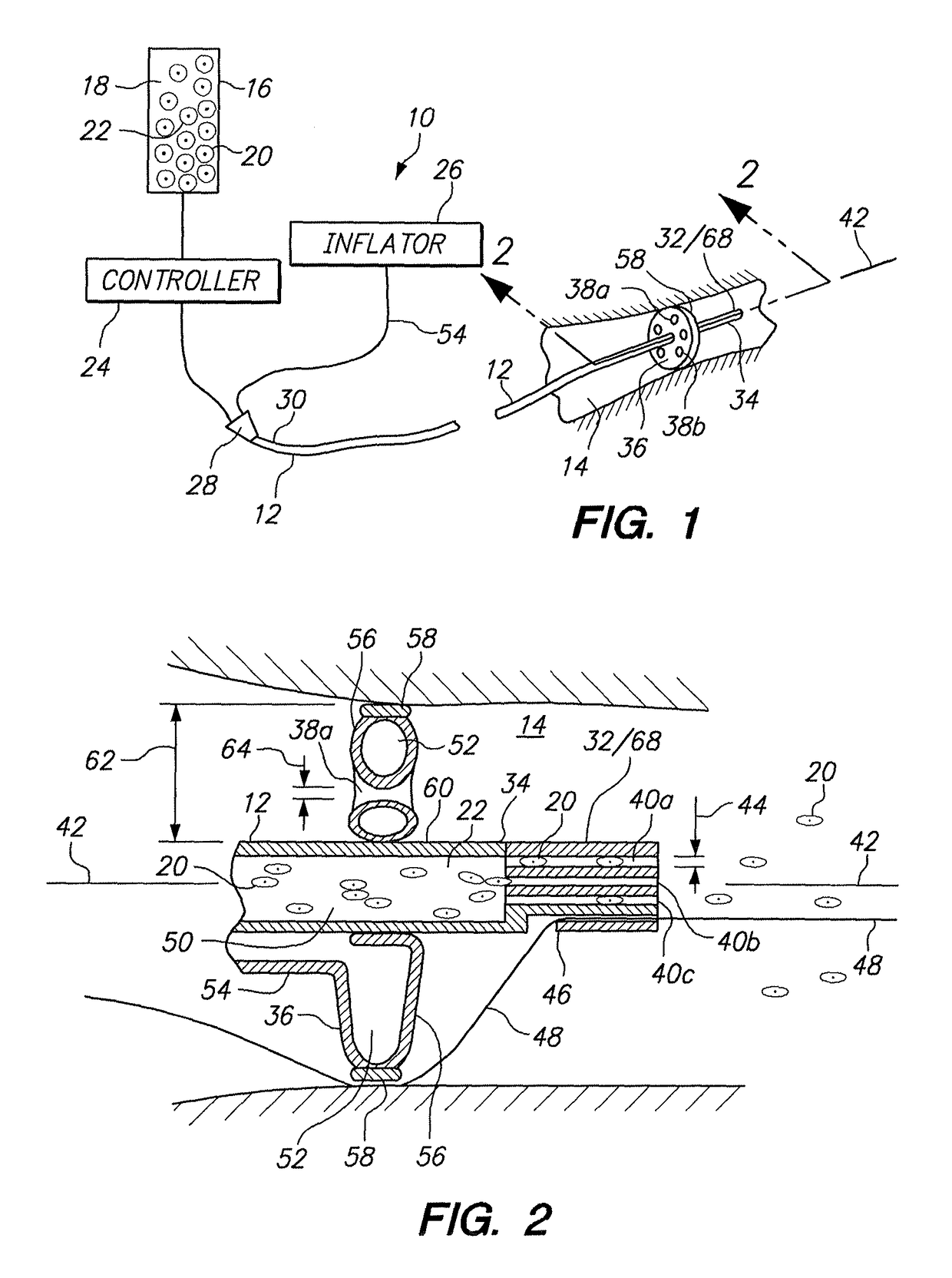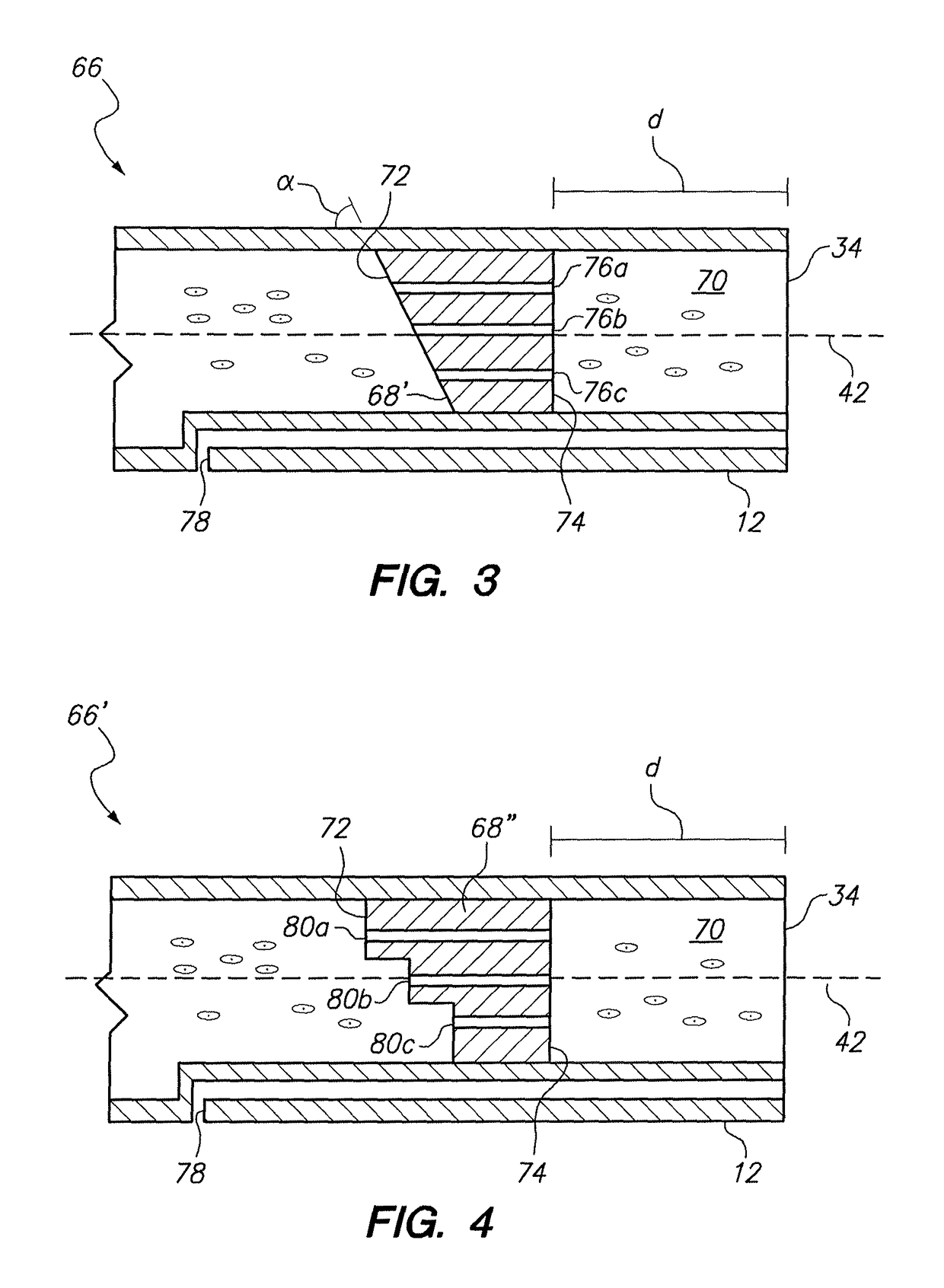Method for infusing stem cells
a stem cell and infusion method technology, applied in the field of infusion systems, can solve the problems of affecting the infusion procedure, being particularly troublesome, susceptible to kinking and/or collapse, etc., and achieve the effect of preventing collaps
- Summary
- Abstract
- Description
- Claims
- Application Information
AI Technical Summary
Benefits of technology
Problems solved by technology
Method used
Image
Examples
Embodiment Construction
[0041]Referring initially to FIG. 1 a system for introducing (infusing) a fluid in accordance with the present invention is shown and is generally designated 10. As shown, the system 10 includes a catheter 12 that can be advanced into a vessel 14 to position the catheter 10 at a predetermined location in the vasculature of a patient (not shown). For the purposes of the present invention, the vessel 14 is preferably an artery or a vein in the cardiovascular system of a patient, and the system 10 is used for an intra-arterial, intravenous or intracoronary protocol.
[0042]In detail, FIG. 1 shows that the system 10 includes a source 16 for holding a fluid medium 18. As also shown in FIG. 1, a plurality of particles 20 are suspended in the fluid medium 18 to create a particle / fluid medium 22. For the present invention, the particles 20 may be some form of a drug or, most likely, they will be some form of a biologics (i.e. cell, gene or protein). In any event, the particles 20 will be susp...
PUM
| Property | Measurement | Unit |
|---|---|---|
| angle | aaaaa | aaaaa |
| force | aaaaa | aaaaa |
| length | aaaaa | aaaaa |
Abstract
Description
Claims
Application Information
 Login to View More
Login to View More - R&D
- Intellectual Property
- Life Sciences
- Materials
- Tech Scout
- Unparalleled Data Quality
- Higher Quality Content
- 60% Fewer Hallucinations
Browse by: Latest US Patents, China's latest patents, Technical Efficacy Thesaurus, Application Domain, Technology Topic, Popular Technical Reports.
© 2025 PatSnap. All rights reserved.Legal|Privacy policy|Modern Slavery Act Transparency Statement|Sitemap|About US| Contact US: help@patsnap.com



